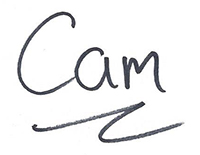I get a lot of mail from readers asking for technical help, usually for very simple things like uploading books to their readers.
A lot of these same readers add something along the lines of “I’m not very computer savvy…”
Surprisingly, it’s not just my romance readers who say this. I’m probably typecasting/profile wildly when I say this actually surprised me, because I thought SF readers would be slightly to a great deal more tech savvy than romance readers.
But no.
As uploading books to an ereader or mobile device is one of the simplest things you can do with computers these days, not being very savvy seems like an understatement.
Also, it’s not really a good excuse any more. Not in 2019, and not if you prefer to read ebooks – and why wouldn’t you, when they’re cheap, cheap, cheap and often free?
Even ten years ago, a person could chose to have little to do with computers, and ask for help doing what they must.
But computers are here to stay, along with all their very convenient relatives like iPads, cellphones, music players, GPS positioning, tablets, ereaders, personal health coaches strapped to your wrist, and much more.
If you read ebooks at all, here’s why it pays to learn even a little bit about computers and technology:
You won’t lose any of your books because you don’t know what you’re doing
And I don’t mean because you mess up and delete them without meaning to, because it’s almost impossible to permanently delete a book these days (and with a bit more knowledge, you’ll understand just how hard it is, too).
But there are myriad ways of losing books, from having a bookseller take it right off your ereader (yes, they can do that), to “losing” the book because you forgot where you filed it, or which reading device it is on.
If you use the Kindle, you have probably experienced the phenomenon of discovering a book far down in the depths of your reader that you forgot you had, and have never read.
With a bit of geeky skill, you’ll never lose track of your books again.
You can read books on the device you want to read them on.
With the help of free applications, you can take any book from anywhere you find it, convert it and read it on the reader you want to read on…or a variety of readers, if you roam from device to device.
Your library of books and your keeper shelves are organized and easy to navigate
Quite apart from the fact that ebooks never collect dust and always file themselves in alphabetical order, there are some tricks to keeping a big collection of ebooks in order that make it much easier on your time and temper.
As the ebook industry is showing no signs of dying out (don’t believe what you hear from the New York Times and other big media outlets, who only report on the legacy side of the industry), and your ebook collection increases in size every week and year, management of your ebooks becomes a priority.
You can shop anywhere you like for books
For example, you might like how easy it is to browse at Amazon and find books to read, but love reading books on your Nook or Kobo device. There are ways around that.
Amazon have a ton of titles, too, that you can’t buy elsewhere, but you can still read them on your preferred device.
Then there are all sorts of specialty stores, publisher direct buying, author direct buying, giveaways, author bundles, special deals and sources of free ebooks such as Project Gutenberg.
If you know what you are doing, you can take books from anywhere, in any format, and read them the way you want to read them.
Treat eBooks like You Once Treated Your Precious Print Editions
Before ebooks became the preferred way to read, many readers I knew would read second-hand print editions, and of the ones they liked they would purchase new print editions, sometimes the hardcover editions if they liked them enough. It was a way of applauding the author and building their keeper collection of re-readables.
As ebooks became more common, and also much, much cheaper, readers switched to buying the ebook first, and then, if they liked the story enough, buying a keeper print edition.
Now, even that practice is dying, as many books simply aren’t available in print (and who wants to read print, anyway?)
So how do you build a special keeper collection?
There are ways to build and maintain a keeper collection that becomes a pleasure to dip into, as well as being an archival record of the story, the author, and your reading history – a far richer and more rewarding collection of keepsakes than print could ever offer.

